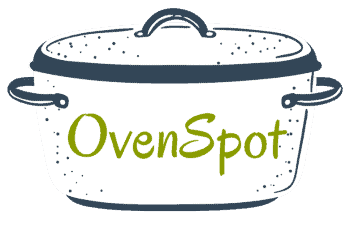What Can You Use Instead of a Pressure Cooker?
Nobody wants to cook for hours after a long day at work, so most people use pressure cookers since they cut cooking time by nearly two-thirds. For example, cooking dried beans on the stove will take approximately 2 to 3 hours, but it will take you less than an hour with a pressure cooker. Despite its numerous benefits, are there alternatives to the pressure cooker?
Instead of a pressure cooker, you can use alternatives like a crock-pot, steamer, microwave, or conventional cooking. A pressure cooker is one of the most versatile kitchen devices, and there is no easy replacement for its functions. However, if you don’t have a pressure cooker, these would suffice.
Let’s discuss other topics related to this question, including how pressure cookers work and alternatives to pressure cookers.

Disclaimer: I earn from qualifying purchases on my website as an Amazon Associate. If you purchase through links from this website, I may get a small share of the sale from Amazon and other similar affiliate programs.
How Does a Pressure Cooker Work?
When it comes to cooking food quickly, pressure cookers are very useful.
These cookers drastically cut the cooking time and make it possible to cook beans, whole grains, and even soul-warming stews on a holiday night much faster. But how does a pressure cooker work?
A pressure cooker might look like a regular pot. However, it has a modified lid that locks a rubber lining to make a seal. The seal helps to trap vapor that rises from the boiling liquid.
The cooker works by increasing the temperature of boiling water from 212°F (100°C), which is the maximum boiling point of water, to 250°F (121°C), thus reducing the cooking time.
Once the cooker reaches maximum pressure, it indicates on a scale on the lid. The pressure then infuses the hot steam into the food.
The higher the pressure, the shorter the cooking time a pressure cooker will use. The only way to change the boiling water’s temperature as it changes to steam is by trapping the steam in a tightly sealed space.
As the water changes to steam, it increases in volume. Since the pressure cooker is closed, the volume is not allowed to increase; therefore, the pressure increases.
Pressure Cooker Substitutes
Microwave Oven
A microwave can offer a swift substitute for a pressure cooker, but it lacks versatility. As the name says, a microwave utilizes microwave technology to prepare food.
The microwaves produced in the microwave oven bounce back and forth and get absorbed in the food being cooked. As the food continues to absorb the microwave’s energy, it cooks through.
Some microwave models have a feature that can roast meat. You can also prepare your veggies rapidly by adding a little water for them to be steamed from the inside.
There is a popular myth that microwaves reduce food’s nutritional content, but that is not true. Microwave ovens are entirely safe and effective for cooking.
Crock-Pot
Just like pressure cookers, crock pots offer you a convenient way to prepare your food.
The big difference between the two is that a crock-pot cooks food more slowly than a pressure cooker.
Slow cookers cook food for four to ten hours. They are perfect for cooking cuts of meat that are usually very tough.
Despite the long cooking hours of the crockpot, the food maintains its nutritional content and flavor. A slow cooker is very convenient.
You have to add all your ingredients at the same time, set it, and leave it to cook.
Avoid peeking since it quickly loses heat and increases the cooking time. Just lift the lid to add extra ingredients to the food.
To learn more about how to use a crock-pot, watch this video:

Learn more about choosing the right slow cooker for your needs.
Steamer
Steamers are a great alternative to pressure cookers. Just like pressure cookers, steamers can cook food effectively and quickly.
You can also use a steamer to prepare a variety of food and still guarantee the nutritional benefits of the food being cooked.
What’s more, you can use a steamer to prepare veggies, green beans, and stuffed food items.
Steaming is preferred to using a pressure cooker because it helps eliminate excess fat in cooking, as it only needs hot vapor.
Steamers can be either electric or stovetop. Regardless of the type, they all utilize steam for cooking food.
Conventional Cooking on the Hob or Oven
Lodge stands out as the most affordable choice for enameled cast iron cookware! To clarify, it's not the least expensive option on the market. We're considering both value and cost here, and Lodge has been producing high-quality cast iron products since 1896, becoming a well-recognized brand in households. Lodge cookware is safe for oven use up to 500°F (260°C) and comes in various sizes and colors.
Traditional cooking is another alternative to using pressure cookers. You can prepare food using this method.
However, it will take longer than when using a pressure cooker. Additionally, the final results are not the same. You can use a Dutch oven on the stovetop or oven to prepare your food.
Conventional cooking on the hob allows you to simmer, boil, sear, and soften dishes all in the same container.
The downside of conventional cooking on the hob or in the oven is that you cannot walk away. As much as it requires time to cook your food, it also needs regulation.
Read about 12 cookware alternatives to using a pressure cooker.
3 Types of Pressure Cookers
Over the years, pressure cooker makers have upgraded the technologies and features of pressure cookers.
The results are various types of pressure cookers that offer more safety and functionality.
There are three main types of pressure cookers: first-generation, second-generation, and electric pressure cookers.
First-Generation Pressure Cookers
These are traditional pressure cookers, and they operate using a weight-adjusted valve that regulates the pressure inside the pressure cookers.
These cookers are very loud, sounding like a whistle, because they have only one pressure mode.
They have minimal safety features, making them undependable and vulnerable to blowing up in the face due to the very high pressure.
Second-Generation Pressure Cookers
These are the newest-gen cookers, and they utilize spring-loaded valves. The spring enables you to set the pressure on various points.
Unlike first-generation, second-generation pressure cookers don’t release the pressure inside the container. Instead, they only release steam when the lid is unsealed or left on the source of heat for too long.
Electric Pressure Cookers
These types of pressure cookers are equipped with advanced features, and they run on electricity.
Electric pressure cookers are very common, with many companies delivering top-notch technology.
Like the second-generation cookers, the electric pressure cookers use spring-loaded valves to regulate the pressure.
They also have computerized features that allow you to cook without much regulation of the appliance.
Types of Pressure Cookers in Terms of Functionality
Some pressure cookers have single or multiple functions that offer various options.
There are two main variations of pressure cookers when it comes to their functionality, including:
• Single-Purpose Pressure Cookers: They are made to deliver just one type of pressure setting.
• Multi-Purpose Pressure Cookers: They have various functionalities, and they can be used as rice cookers, slow cookers, steamers, and much more.
FAQs
Quick answers to a couple of common questions asked about pressure cookers.
Can You Use a Slow Cooker Instead of a Pressure Cooker?
Yes, you can, but you cannot use the one-pot to prepare the recipe.
You will have to sear or brown meat and sauté vegetables in a separate pan before adding them to the slow cooker.
Also, the cooking time needs to be increased to either 3 to 4 hours on the high slow cooker setting or 6 to 8 hours on the low slow cook setting.
What Are the Disadvantages of Pressure Cooking?
Pressure cookers have their recipes for the following reasons, which could be deemed as disadvantages of using a pressure cooker.
The pressure cookers’ ingredients can only be filled to the maximum measure line in the internal cooking pot – as there needs to be room for the pressure to build.
Much like very early front load washers, you cannot just “open the lid of the pressure cooker” to see how the dish is cooking or to add “a little extra of this or that.”
To do this, you have to depressurize the cooker, check the dish, and then start the process again! What cooking time would you set then???
Certain types of food, such as pasta or oatmeal, do not fare well in a pressure cooker.
Conclusion – What Can You Use Instead of a Pressure Cooker?
All cooking appliances can help you prepare food, and they offer benefits like retaining the nutrients and flavor of the food.
However, while all other cooking appliances provide a convenient way to prepare your meal, a pressure cooker has more advantages.
It combines all the best aspects of cooking devices into a single-use and economical machine.
Additionally, the nutritional content in the food is preserved when using a pressure cooker. The sealed unit traps everything inside that could be otherwise lost when cooking.
There could be various alternatives to a pressure cooker, but none can replace all its uses. A pressure cooker is an essential appliance to have in the kitchen.
However, if you don’t have one, you can use alternatives like a steamer, crock-pot, or microwave, or cook food conventionally using a Dutch oven on a stovetop or in the oven.
Recommended Reading
More about the differences between a crockpot and a slow cooker
Learn more about the differences and similarities between a pressure cooker vs a slow cooker
The difference between Dutch ovens and pressure cookers
One-Pot Cooking Rocks!
Sources
- Wikipedia: Boiling Point
- FDA – Microwave Oven Safety
- Institute of Agriculture and Natural Resources – Food Safety Tips for Electric Multi-Cookers

Michelle
Hi, I’m Michelle, the founder, owner, author, and editor of OvenSpot. My passion for one-pot cooking commenced when I was working to prepare cafeteria lunches for school students. I am now on a mission to assist you in choosing the cooking pot or appliance you will use daily. As well as in-depth information to assist you in using and caring for your cookware and appliances.
Questions? Reach out to Michelle at [email protected]




